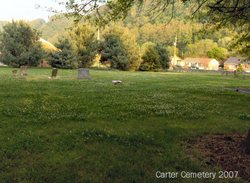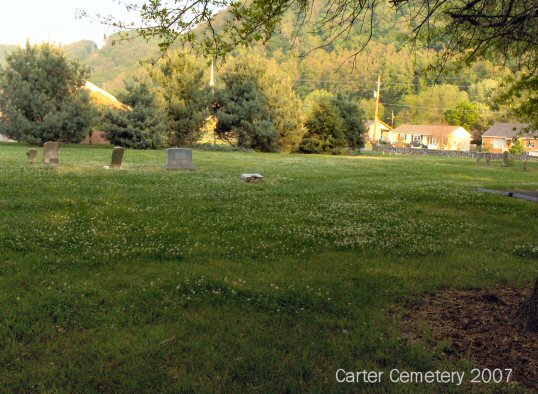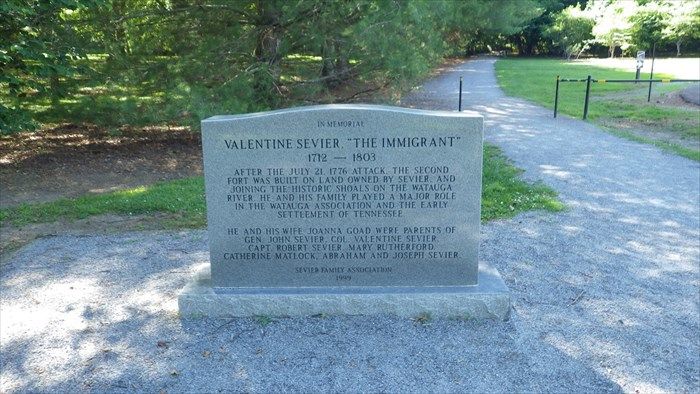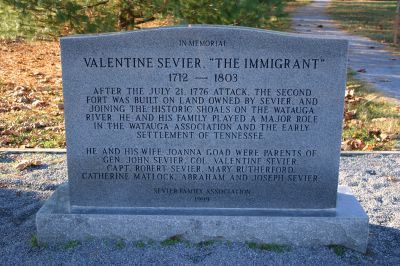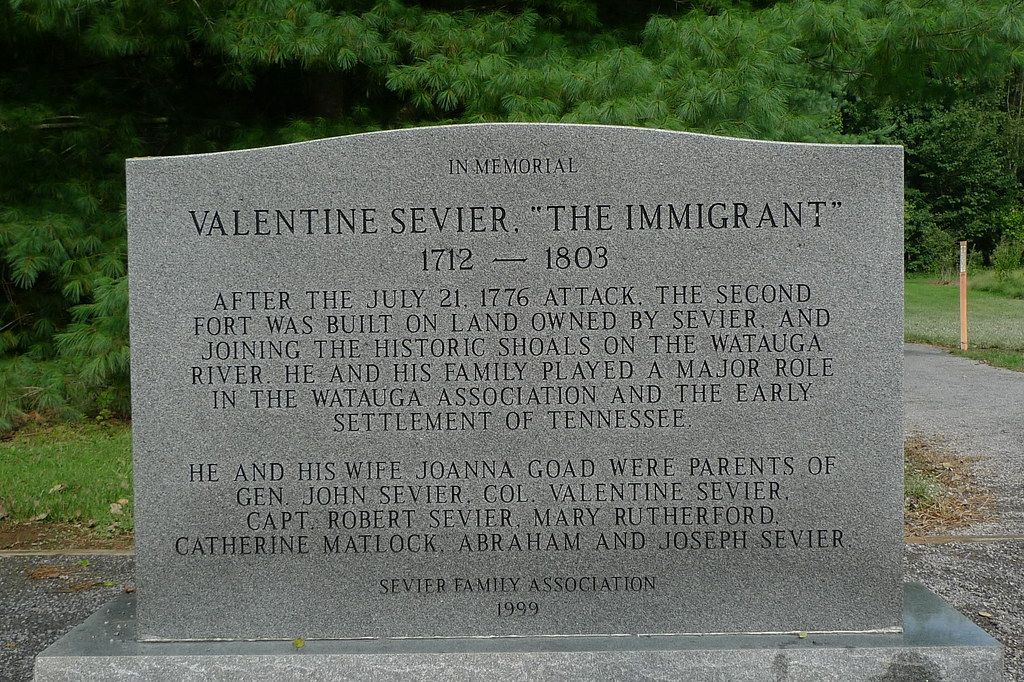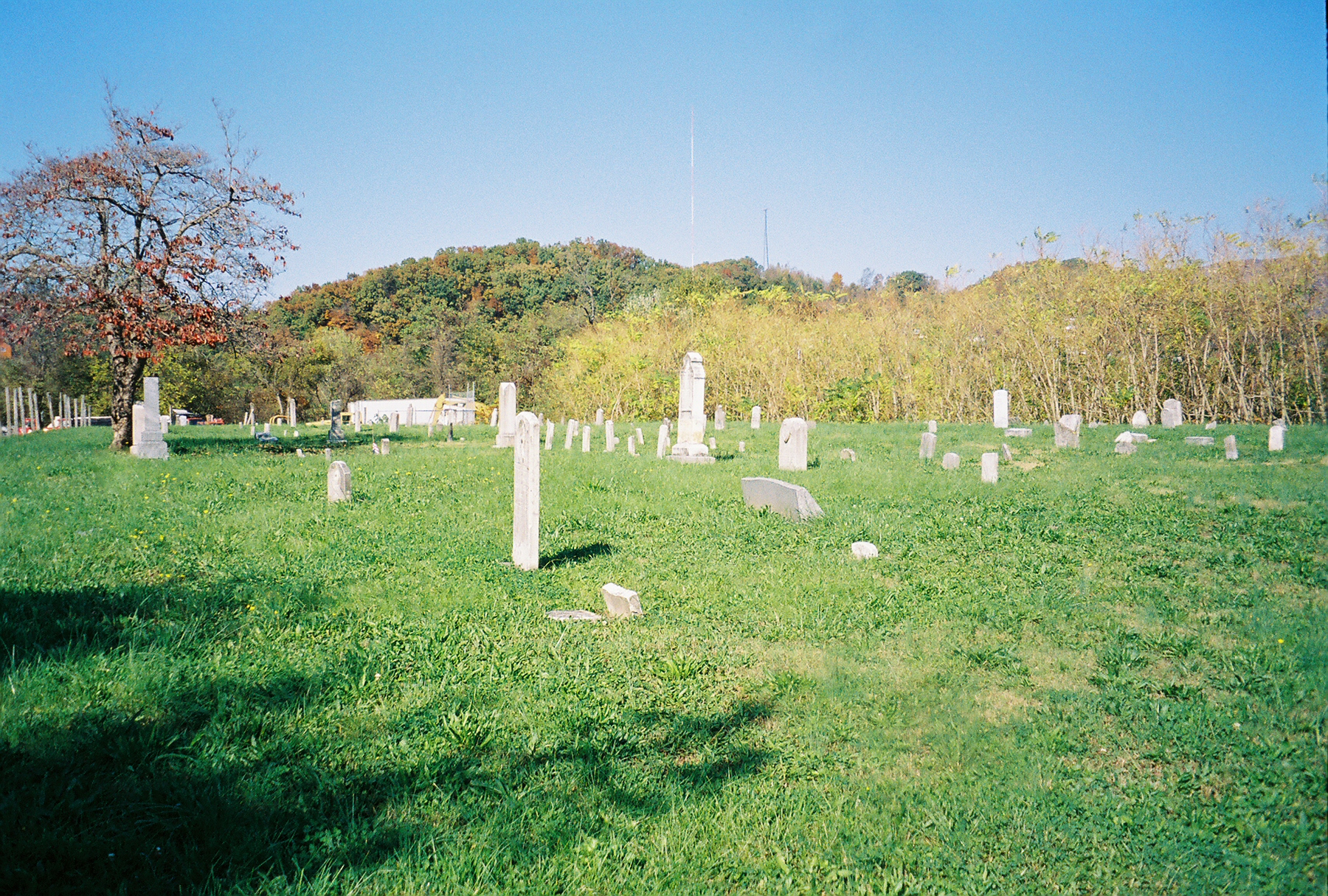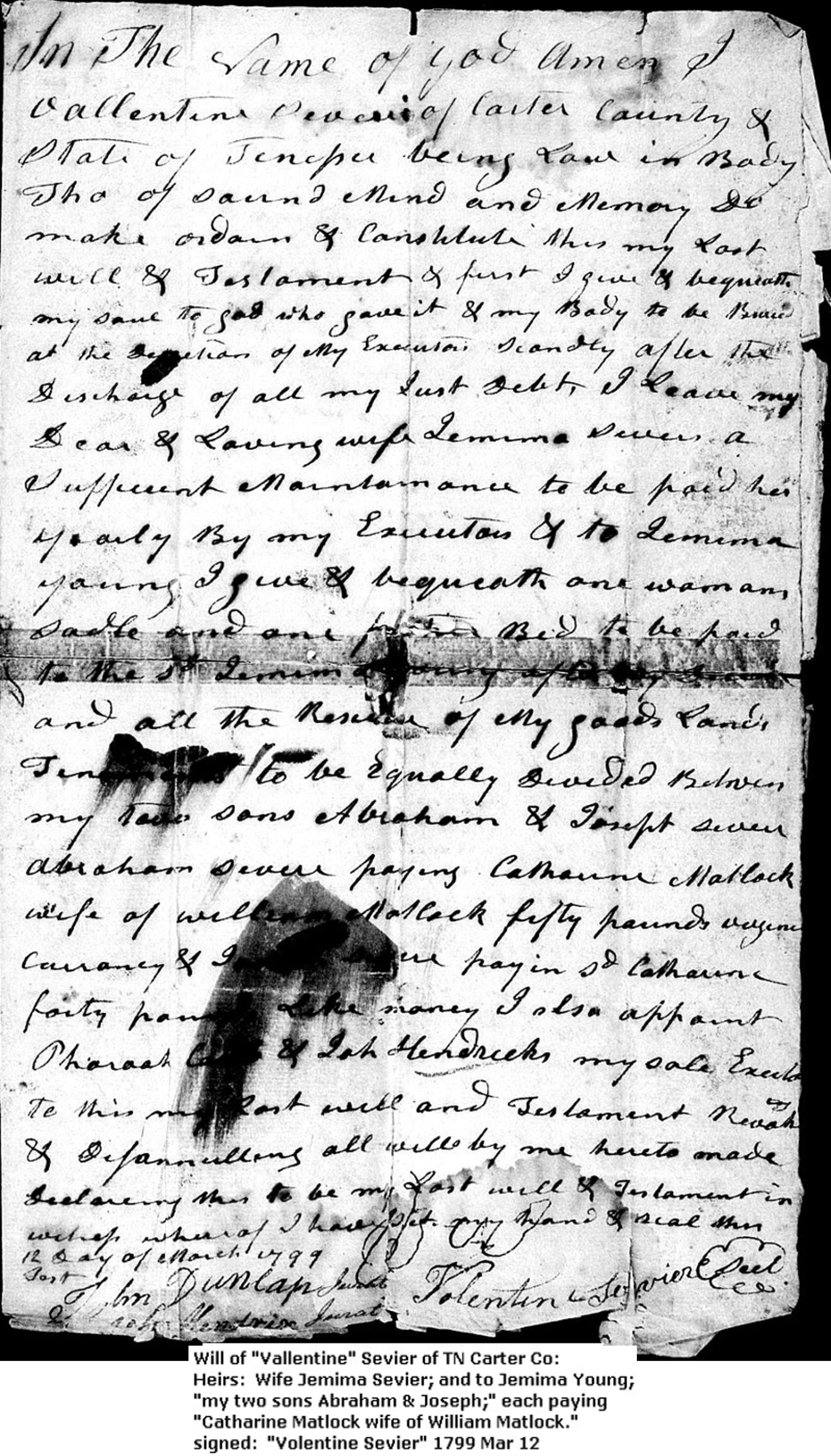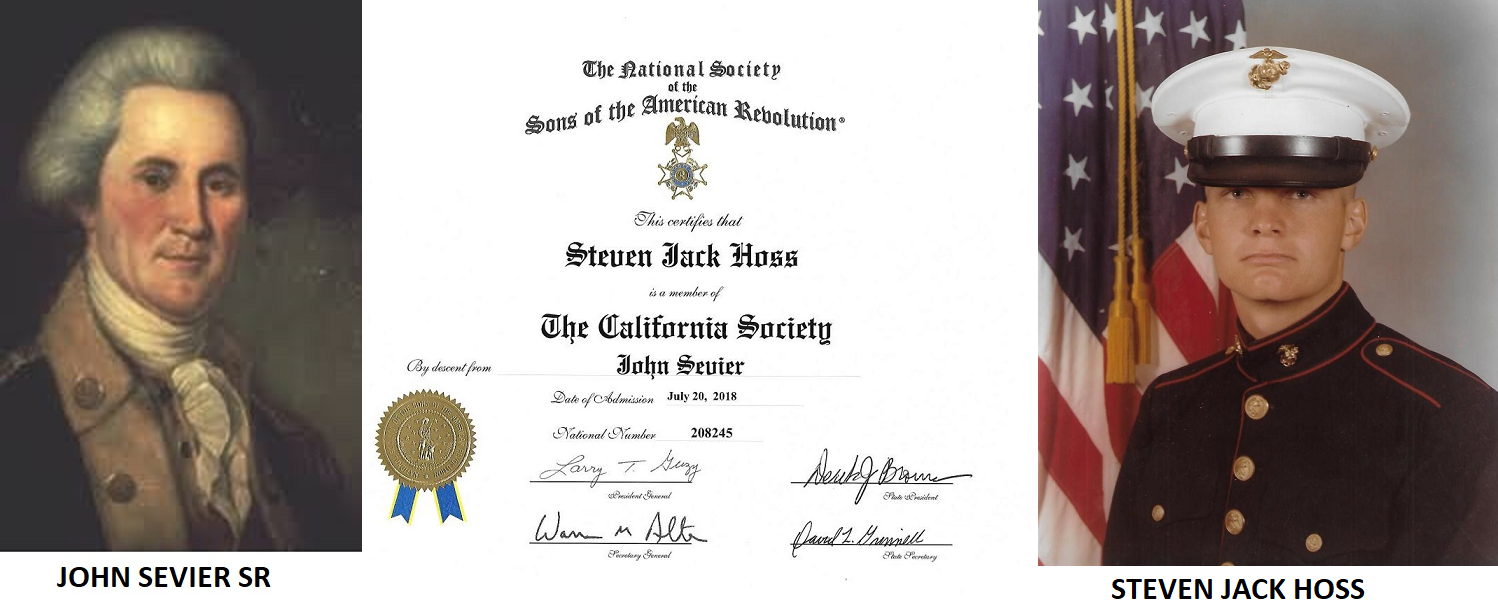----------
Valentine SEVIER, (Valentine , Don DE XAVIER) was born Feb 1, 1701/1702 in St Giles Parish, London, England, and married (7) Jemima YOUNG. Valentine died on Dec 30, 1803 in Carter City, Near Watauga Settlement, Carter County, Tn.
He also married in 1744 in Culpepper Co., Va, (8) Joanna GOAD, daughter of John (my link) GOAD and Ann ISHAM, who was born Nov 1, 1723 in Virginia, Bedford Co., Va.. Joanna died after Aug 15, 1773 in Virginia, Rockingham Count, Va.
BIRT PLAC Virginia, Bedford County (Brunswick County Then), Virginia DEAT PLAC Virginia, Rockingham County, Virginia Valentine Sevier II and Joanna Goad Sevier settled in Culpepper Co., Va, moving later to Rockingham County, Va, where John Sevier, their eldest child and the most famous member of their family, was born Septmeber 23, 1745. Valentine Sevier arrived on Watauga Settlement, December 25, 1773 accompanied by 5 sons and 3 daughters to join his son Valentine who was already there. Immigrated to United States about 1740 in Orange County, Virginia. He took the oath of allegiance on August 27, 1778. He died at the Watauga Settlement in Carter County. It is possible that he was buried in the Green Hill Cemetery, Carter County, Tennessee on 12-31-1803.
-- Teresa Treadway (46900077)
∼Valentine Sevier
The Immigrant
by John Sevier "Jack" Gibson
Valentine Sevier was born in London, England in 1702, the oldest of several children of John Sevier (Jean Xavier) and Mary Smith. This John Sevier, a Huguenot, fled France just before 1700, anglicized his name (pronounced like the adjective "severe"), and settled in London. His son Valentine (pronounced "vahl'-en-tine") was christened there in 1712, in St. Giles Cripplegate Church in London, which still stands and is in use today. It was severely damaged in the bombing of London during WWII but is now completely restored. It is located in the "Old City" area near famous St. Paul's Cathedral.
In 1740, Valentine and a brother William, "took ship" for the American Colonies, arriving in Baltimore. Almost immediately, Valentine took up residence in the Shenandoah Valley of Virginia, a few miles southwest of present day New Market. In the early 1740s, Valentine married Joanna Goad and rapidly became a large land owner, farmer, miller, innkeeper and merchant. As his status in the community grew, he became the local tax and toll collector and his two story stone house and lands became known as the "Toll House Farm." This house, considerably modernized and highly modified, is still used as a home today. Valentine and Joanna had a family of five sons and two daughters. The oldest son John, born in 1745, was the first generation American from whom the author is descended. The other known children, in order of birth, are Valentine, Robert, Mary ("Polly"), Catherine, Abraham, and Joseph. All of Valentine's children were educated by tutors or in nearby small schools in the Shenandoah Valley settlements.
Valentine became involved in military affairs as early as 1742 when he was a Captain in the Virginia Militia. He participated in the defense against a number of Indian attacks and in the French and Indian War. Many of Valentine's businesses fell on hard times due to the frequent frontier unrest and attacks, especially in the mid 1750s, and he moved his family twice for safety. Then in 1773, the lure of more promising and fertile lands in the far southwest of the Shenandoah Valley compelled him to move one more time. He arrived there with many of his family on Christmas day. His wife Joanna died apparently just before the family set out for this move. While they thought they were still in Virginia, three years later it was determined that the Seviers and other nearby settlers were south of the Virginia line, in the valleys of the North Carolina "Overmountain" Territory. This area would later become part of northeastern Tennessee and son John would become the first Governor of that new state in 1796.
The area that Valentine settled was Sycamore Shoals on the Watauga River. This is the same area where the second Ft. Watauga was built (on lands owned by Valentine) for safety from Indian attacks. It was later the rendezvous place for the gathering of the Overmountain Men for the march to the successful Revolutionary War battle of Kings Mountain, South Carolina, on September 7, 1780. Valentine was deemed too old to go on that expedition but he was in the Home Guard and stayed at Sycamore Shoals as part of the settlement defense force. However, all five of his sons and two of John's sons, Joseph and James, did go. All were in John's Militia Regiment and participated in the battle. Unfortunately, Robert was mortally wounded and died several days later.
Valentine married a second wife, Jemima (Young?), probably in the mid to late 1770s. Little is known of Valentine's activities after 1780 but he apparently continued some of his farming, innkeeping, and other businesses for many years. He was always known as a hard working man and was well to do by the standards of the time. It is also said that he really enjoyed life and had a "Cavalier or French" taste for pleasure. He died on December 30, 1803 in the Watauga Settlement area (near present day Elizabethton, Tennessee).
Valentine's actual burial location is unmarked and unknown. In 1999, The Sevier Family placed a large memorial stone for him in Sycamore Shoals State Park on the Watauga River, near Elizabethton. In 1960, a small group of Seviers placed a memorial plaque for him in the Huguenot Church in Charleston, South Carolina. These are the only two known memorials to Valentine. Today the vast majority of Seviers in the United States are descended from Valentine Sevier.
References:
1. "The Seviers of Tennessee," by John Sevier Gibson and John C. Echerd, SAR Magazine, Spring 2002.
2. Sevier Family History, by Cora B. Sevier and Nancy S. Madden, published in Washington. DC, 1961.
3. Annals of Tennessee, by J.G.M. Ramsey, originally published in Charleston, South Carolina, 1853.
4. Unpublished Sevier Family research material from London archives.
----------
Valentine SEVIER, (Valentine , Don DE XAVIER) was born Feb 1, 1701/1702 in St Giles Parish, London, England, and married (7) Jemima YOUNG. Valentine died on Dec 30, 1803 in Carter City, Near Watauga Settlement, Carter County, Tn.
He also married in 1744 in Culpepper Co., Va, (8) Joanna GOAD, daughter of John (my link) GOAD and Ann ISHAM, who was born Nov 1, 1723 in Virginia, Bedford Co., Va.. Joanna died after Aug 15, 1773 in Virginia, Rockingham Count, Va.
BIRT PLAC Virginia, Bedford County (Brunswick County Then), Virginia DEAT PLAC Virginia, Rockingham County, Virginia Valentine Sevier II and Joanna Goad Sevier settled in Culpepper Co., Va, moving later to Rockingham County, Va, where John Sevier, their eldest child and the most famous member of their family, was born Septmeber 23, 1745. Valentine Sevier arrived on Watauga Settlement, December 25, 1773 accompanied by 5 sons and 3 daughters to join his son Valentine who was already there. Immigrated to United States about 1740 in Orange County, Virginia. He took the oath of allegiance on August 27, 1778. He died at the Watauga Settlement in Carter County. It is possible that he was buried in the Green Hill Cemetery, Carter County, Tennessee on 12-31-1803.
-- Teresa Treadway (46900077)
∼Valentine Sevier
The Immigrant
by John Sevier "Jack" Gibson
Valentine Sevier was born in London, England in 1702, the oldest of several children of John Sevier (Jean Xavier) and Mary Smith. This John Sevier, a Huguenot, fled France just before 1700, anglicized his name (pronounced like the adjective "severe"), and settled in London. His son Valentine (pronounced "vahl'-en-tine") was christened there in 1712, in St. Giles Cripplegate Church in London, which still stands and is in use today. It was severely damaged in the bombing of London during WWII but is now completely restored. It is located in the "Old City" area near famous St. Paul's Cathedral.
In 1740, Valentine and a brother William, "took ship" for the American Colonies, arriving in Baltimore. Almost immediately, Valentine took up residence in the Shenandoah Valley of Virginia, a few miles southwest of present day New Market. In the early 1740s, Valentine married Joanna Goad and rapidly became a large land owner, farmer, miller, innkeeper and merchant. As his status in the community grew, he became the local tax and toll collector and his two story stone house and lands became known as the "Toll House Farm." This house, considerably modernized and highly modified, is still used as a home today. Valentine and Joanna had a family of five sons and two daughters. The oldest son John, born in 1745, was the first generation American from whom the author is descended. The other known children, in order of birth, are Valentine, Robert, Mary ("Polly"), Catherine, Abraham, and Joseph. All of Valentine's children were educated by tutors or in nearby small schools in the Shenandoah Valley settlements.
Valentine became involved in military affairs as early as 1742 when he was a Captain in the Virginia Militia. He participated in the defense against a number of Indian attacks and in the French and Indian War. Many of Valentine's businesses fell on hard times due to the frequent frontier unrest and attacks, especially in the mid 1750s, and he moved his family twice for safety. Then in 1773, the lure of more promising and fertile lands in the far southwest of the Shenandoah Valley compelled him to move one more time. He arrived there with many of his family on Christmas day. His wife Joanna died apparently just before the family set out for this move. While they thought they were still in Virginia, three years later it was determined that the Seviers and other nearby settlers were south of the Virginia line, in the valleys of the North Carolina "Overmountain" Territory. This area would later become part of northeastern Tennessee and son John would become the first Governor of that new state in 1796.
The area that Valentine settled was Sycamore Shoals on the Watauga River. This is the same area where the second Ft. Watauga was built (on lands owned by Valentine) for safety from Indian attacks. It was later the rendezvous place for the gathering of the Overmountain Men for the march to the successful Revolutionary War battle of Kings Mountain, South Carolina, on September 7, 1780. Valentine was deemed too old to go on that expedition but he was in the Home Guard and stayed at Sycamore Shoals as part of the settlement defense force. However, all five of his sons and two of John's sons, Joseph and James, did go. All were in John's Militia Regiment and participated in the battle. Unfortunately, Robert was mortally wounded and died several days later.
Valentine married a second wife, Jemima (Young?), probably in the mid to late 1770s. Little is known of Valentine's activities after 1780 but he apparently continued some of his farming, innkeeping, and other businesses for many years. He was always known as a hard working man and was well to do by the standards of the time. It is also said that he really enjoyed life and had a "Cavalier or French" taste for pleasure. He died on December 30, 1803 in the Watauga Settlement area (near present day Elizabethton, Tennessee).
Valentine's actual burial location is unmarked and unknown. In 1999, The Sevier Family placed a large memorial stone for him in Sycamore Shoals State Park on the Watauga River, near Elizabethton. In 1960, a small group of Seviers placed a memorial plaque for him in the Huguenot Church in Charleston, South Carolina. These are the only two known memorials to Valentine. Today the vast majority of Seviers in the United States are descended from Valentine Sevier.
References:
1. "The Seviers of Tennessee," by John Sevier Gibson and John C. Echerd, SAR Magazine, Spring 2002.
2. Sevier Family History, by Cora B. Sevier and Nancy S. Madden, published in Washington. DC, 1961.
3. Annals of Tennessee, by J.G.M. Ramsey, originally published in Charleston, South Carolina, 1853.
4. Unpublished Sevier Family research material from London archives.
Inscription
This is a memorial plaque in the French Huguenot Church. Valentine Sevier was indeed Huguenot, but he was not buried in Charleston, SC.
Contributor:
Annette Blum
